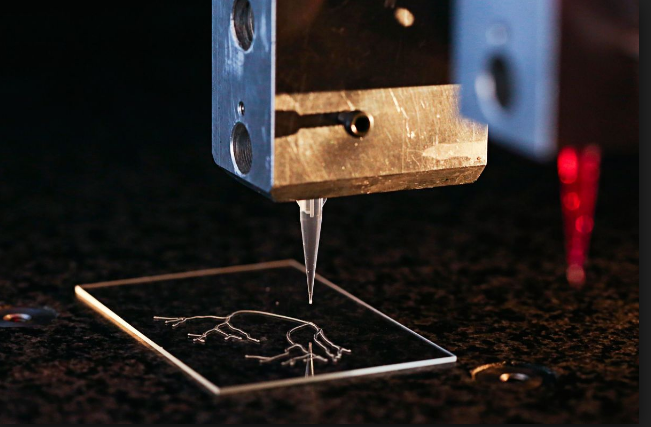
3D printing has bridged the gap between fantasy and the real world. The conceptualization in biomedical engineering has proven to be wildly beneficial for humans. The concept has garnered the attention of every sector. Be it the aviation industry which uses it to print airplane parts or the electrical equipment appliances being printed now with much perfection.
One avenue which has proved all the way more beneficial is the medical sector. 3D printing which is referred to as bioprinting is made up of living cell structures. The precise living tissue can be printed by taking the reference of a digital model as input. It is not just tissues but advanced medical tools and devices can be made with bio-printing. With the assistance of reliable professionals 3D printing solutions can be used in medical sector to print devices, cranium replacements for skull and many other things which have been highlighted in the article below.
Here are the 10 ways 3D printing can be used in medical sector:
1- Bone and Cartilage

The process is still under research but a solid foundation has been laid with the success of existing models. Hod Lipson had prototyped tissue bioprinting for cartilage. Although a stronger meniscus is yet to be printed, the engineers are well on course to find an ideal solution to apply bioprinting for stronger cartilage and bone printing.
2- Organs
Amongst many organs, the scientists have successfully printed organs for surgical use. These include kidney cells, cardiac tissues and basic elements of human liver. It is still few years when we will be able to print an entire human organ for transplant. Yet, this can be said with concrete results that we are on our way to achieve desired results.
3- Stem Cells

Printing cells straight into the human body might sound a bit far fetched. However, across the world in several labs stem cells are being printed. Stem cells are known to have strong regenerative properties with other human tissues can be regenerated. With Stem Cells bioprinting, one can only imagine the wonders it would do to the medical sector.
4- Skin
Imagine what the printing skin grafts could do for burn victims and skin cancer patients. Besides the researchers who are looking to develop a skin graft printing, from last 10 years engineers from Germany have been working to develop skin cell bioprinting. It would give help patients suffering from diseases which affect the epidermis to get rid of the damaged skin.
5- Cheaper Prosthetic Parts
Bio-printed prosthetic parts created a stir in the entire world. These prosthetics are comparatively cheaper than their traditional versions. Also, a bio-printed prosthetic does not take much time and any change can be done without destroying the original model.
6- Medicine
In a TED talk, Lee Cronin talked about how chemical compounds can be assembled at a molecular level with bio-printing. This implies, that in future patients won’t buy drugs rather a digital prescription of chemical ink needed with which the drugs can be printed at home. The researchers at Louisiana Technical University so far have achieved the feat of printing biocompatible and biodegradable devices which delivers bone cancer medicine.
7- Medical Models
Medical models in the cases of tumors help to better understand the growth, spread, and anti-tumor drugs. Medicinal models have already been printed by the researchers in China and US with the use of bioprinting. Specific models can be printed based on the patient reports generated through CT or MRI.
8- Heart Valve

The human donor supply shortage can be resolved with the bioprinted heart valve. With the help of a dual syringe machine, Jonathan Butcher was able to print a heart valve which will be tested in a sheep. The stiffness of bioprinted heart valve was controlled with the combination of alginate, smooth muscle cells and valve interstitial cells. These tissues can grow and adapt to the normal human functions.
9- Cranium Replacement
Dutch surgeons replaced an entire damaged skull of a woman with a customized printed model. The Chinese implanted bioprinted skull to a man. A bioprinted skull can be modeled for patients with damaged skulls and can be planted with a 3D printed treatment.
10- Heart and Blood vessels
The researchers at Harvard University have made great in ways towards bioprinting blood vessels. With blood vessels, bioprinting next step is to print tissues with blood supply. Dr. Jennifer Lewis has designed customized 3D printer and a dissolving ink which can be used to create a network of tissues with skin cells. This interwoven structure of skin cells is perceived to work as blood vessels.
3D printing is a revolutionary technology which has given results in past and with many potential benefi features, surely it has got medical sector all worked up. For patients suffering from cancer or skin diseases, it comes as a great relief as researchers can work with the high quality material to look for cure and treatments.

Leave Your Comments